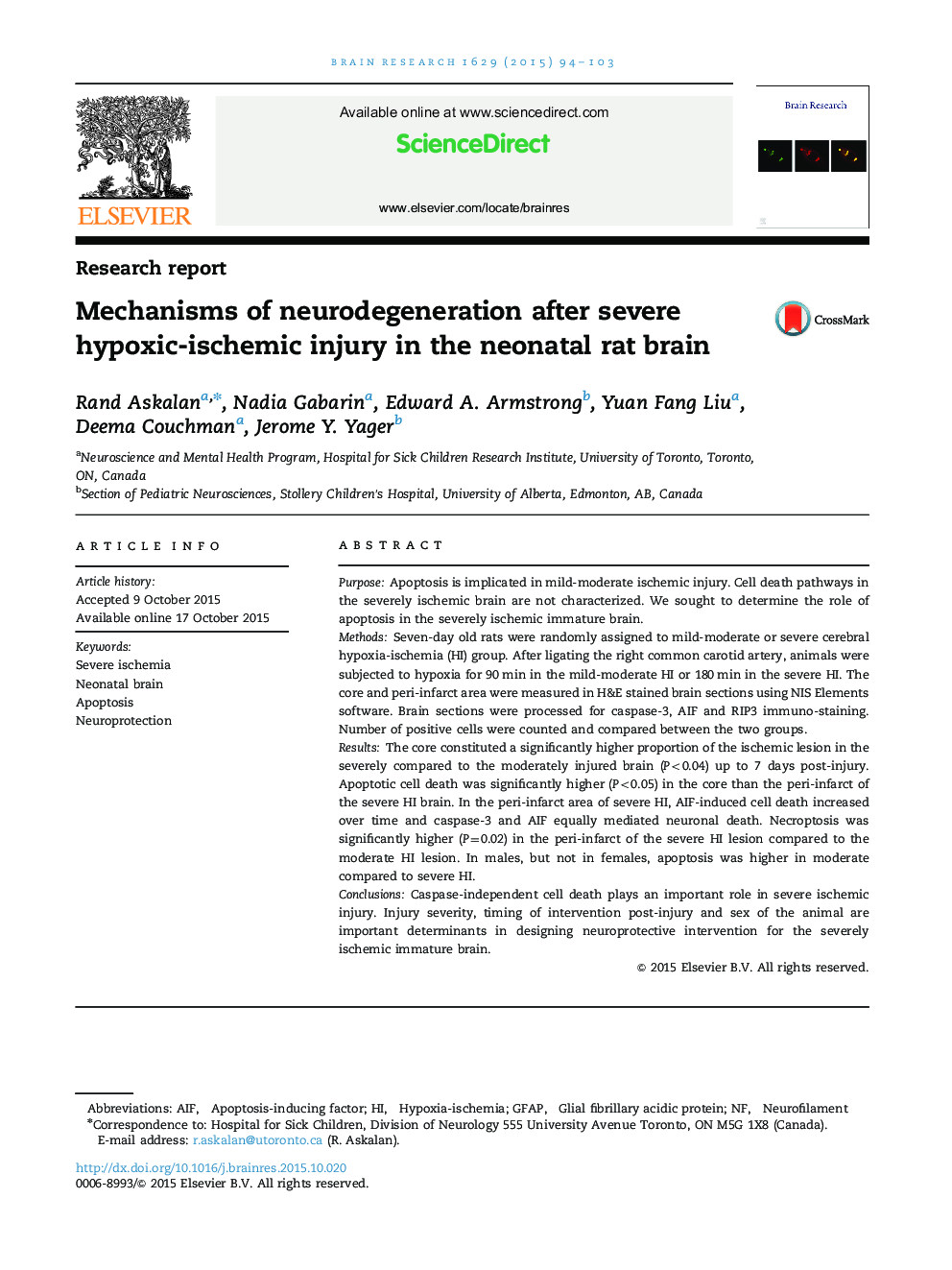| Article ID | Journal | Published Year | Pages | File Type |
|---|---|---|---|---|
| 6262787 | Brain Research | 2015 | 10 Pages |
â¢We examined cell death pathways in neonatal rat brain with severe ischemic injury.â¢Apoptosis was a key mechanism of cell death in the core and peri-infarct area.â¢Sexual dimorphism and time post-injury influenced apoptotic cell death pathways.â¢Caspase-independent death caused ischemic damage more than in moderate injury.â¢AIF and RIP3, key mediators of cell death, are potential therapeutic targets.
PurposeApoptosis is implicated in mild-moderate ischemic injury. Cell death pathways in the severely ischemic brain are not characterized. We sought to determine the role of apoptosis in the severely ischemic immature brain.MethodsSeven-day old rats were randomly assigned to mild-moderate or severe cerebral hypoxia-ischemia (HI) group. After ligating the right common carotid artery, animals were subjected to hypoxia for 90Â min in the mild-moderate HI or 180Â min in the severe HI. The core and peri-infarct area were measured in H&E stained brain sections using NIS Elements software. Brain sections were processed for caspase-3, AIF and RIP3 immuno-staining. Number of positive cells were counted and compared between the two groups.ResultsThe core constituted a significantly higher proportion of the ischemic lesion in the severely compared to the moderately injured brain (P<0.04) up to 7 days post-injury. Apoptotic cell death was significantly higher (P<0.05) in the core than the peri-infarct of the severe HI brain. In the peri-infarct area of severe HI, AIF-induced cell death increased over time and caspase-3 and AIF equally mediated neuronal death. Necroptosis was significantly higher (P=0.02) in the peri-infarct of the severe HI lesion compared to the moderate HI lesion. In males, but not in females, apoptosis was higher in moderate compared to severe HI.ConclusionsCaspase-independent cell death plays an important role in severe ischemic injury. Injury severity, timing of intervention post-injury and sex of the animal are important determinants in designing neuroprotective intervention for the severely ischemic immature brain.
